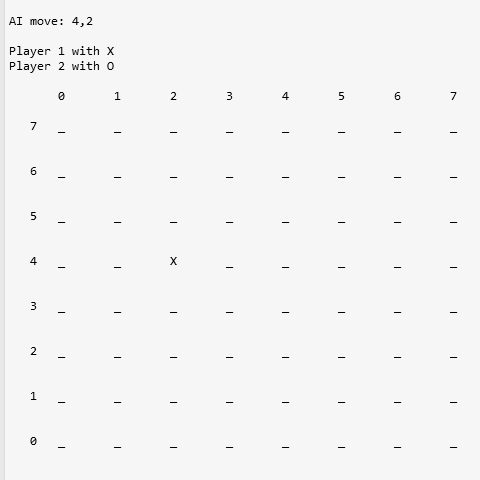FOLD-R-PP
The implementation of FOLD-R++ algorithm. The target of FOLD-R++ algorithm is to learn an answer set program for a classification task.
Installation
Prerequisites
FOLD-R++ is developed with only python3. Numpy is the only dependency:
python3 -m pip install numpy
Instruction
Data preparation
The FOLD-R++ algorithm takes tabular data as input, the first line for the tabular data should be the feature names of each column. The FOLD-R++ does not need encoding for training. It can deal with numeric, categorical, and even mixed type features (one column contains categorical and numeric values) directly. But, the numeric features should be specified before loading data, otherwise they would be dealt like categorical features (only literals with = and != would be generated).
There are many UCI datasets can be found in the data directory, and the code pieces of data preparation should be added to datasets.py.
For example, the UCI breast-w dataset can be loaded with the following code:
columns = ['clump_thickness', 'cell_size_uniformity', 'cell_shape_uniformity', 'marginal_adhesion',
'single_epi_cell_size', 'bare_nuclei', 'bland_chromatin', 'normal_nucleoli', 'mitoses']
nums = columns
data, num_idx, columns = load_data('data/breastw/breastw.csv', attrs=columns, label=['label'], numerics=nums, pos='benign')
columns lists all the features needed, nums lists all the numeric features, label implies the feature name of the label, pos indicates the positive value of the label.
Training
The FOLD-R++ algorithm generates an explainable model that is represented with an answer set program for classification tasks. Here's an training example for breast-w dataset:
X_train, Y_train = split_xy(data_train)
X_pos, X_neg = split_X_by_Y(X_train, Y_train)
rules1 = foldrpp(X_pos, X_neg, [])
We have got a rule set rules1 in a nested intermediate representation. Flatten and decode the nested rules to answer set program:
fr1 = flatten(rules1)
rule_set = decode_rules(fr1, attrs)
for r in rule_set:
print(r)
The training process can be started with: python3 main.py
An answer set program that is compatible with s(CASP) is generated as below.
% breastw dataset (699, 10).
% the answer set program generated by foldr++:
label(X,'benign'):- bare_nuclei(X,'?').
label(X,'benign'):- bland_chromatin(X,N6), N6=<4.0,
clump_thickness(X,N0), N0=<6.0,
bare_nuclei(X,N5), N5=<1.0, not ab7(X).
label(X,'benign'):- cell_size_uniformity(X,N1), N1=<2.0,
not ab3(X), not ab5(X), not ab6(X).
label(X,'benign'):- cell_size_uniformity(X,N1), N1=<4.0,
bare_nuclei(X,N5), N5=<3.0,
clump_thickness(X,N0), N0=<3.0, not ab8(X).
ab2(X):- clump_thickness(X,N0), N0=<1.0.
ab3(X):- bare_nuclei(X,N5), N5>5.0, not ab2(X).
ab4(X):- cell_shape_uniformity(X,N2), N2=<1.0.
ab5(X):- clump_thickness(X,N0), N0>7.0, not ab4(X).
ab6(X):- bare_nuclei(X,N5), N5>4.0, single_epi_cell_size(X,N4), N4=<1.0.
ab7(X):- marginal_adhesion(X,N3), N3>4.0.
ab8(X):- marginal_adhesion(X,N3), N3>6.0.
% foldr++ costs: 0:00:00.027710 post: 0:00:00.000127
% acc 0.95 p 0.96 r 0.9697 f1 0.9648
Testing in Python
The testing data X_test, a set of testing data, can be predicted with the predict function in Python.
Y_test_hat = predict(rules1, X_test)
The classify function can also be used to classify a single data.
y_test_hat = classify(rules1, x_test)
Justification by using s(CASP)
Classification and justification can be conducted with s(CASP), but the data also need to be converted into predicate format. The decode_test_data function can be used for generating predicates for testing data.
data_pred = decode_test_data(data_test, attrs)
for p in data_pred:
print(p)
Here is an example of generated testing data predicates along with the answer set program for acute dataset:
% acute dataset (120, 7)
% the answer set program generated by foldr++:
ab2(X):- a5(X,'no'), a1(X,N0), N0>37.9.
label(X,'yes'):- not a4(X,'no'), not ab2(X).
% foldr++ costs: 0:00:00.001990 post: 0:00:00.000040
% acc 1.0 p 1.0 r 1.0 f1 1.0
id(1).
a1(1,37.2).
a2(1,'no').
a3(1,'yes').
a4(1,'no').
a5(1,'no').
a6(1,'no').
id(2).
a1(2,38.1).
a2(2,'no').
a3(2,'yes').
a4(2,'yes').
a5(2,'no').
a6(2,'yes').
id(3).
a1(3,37.5).
a2(3,'no').
a3(3,'no').
a4(3,'yes').
a5(3,'yes').
a6(3,'yes').
s(CASP)
All the resources of s(CASP) can be found at https://gitlab.software.imdea.org/ciao-lang/sCASP.
Citation
@misc{wang2021foldr,
title={FOLD-R++: A Toolset for Automated Inductive Learning of Default Theories from Mixed Data},
author={Huaduo Wang and Gopal Gupta},
year={2021},
eprint={2110.07843},
archivePrefix={arXiv},
primaryClass={cs.LG}
}



